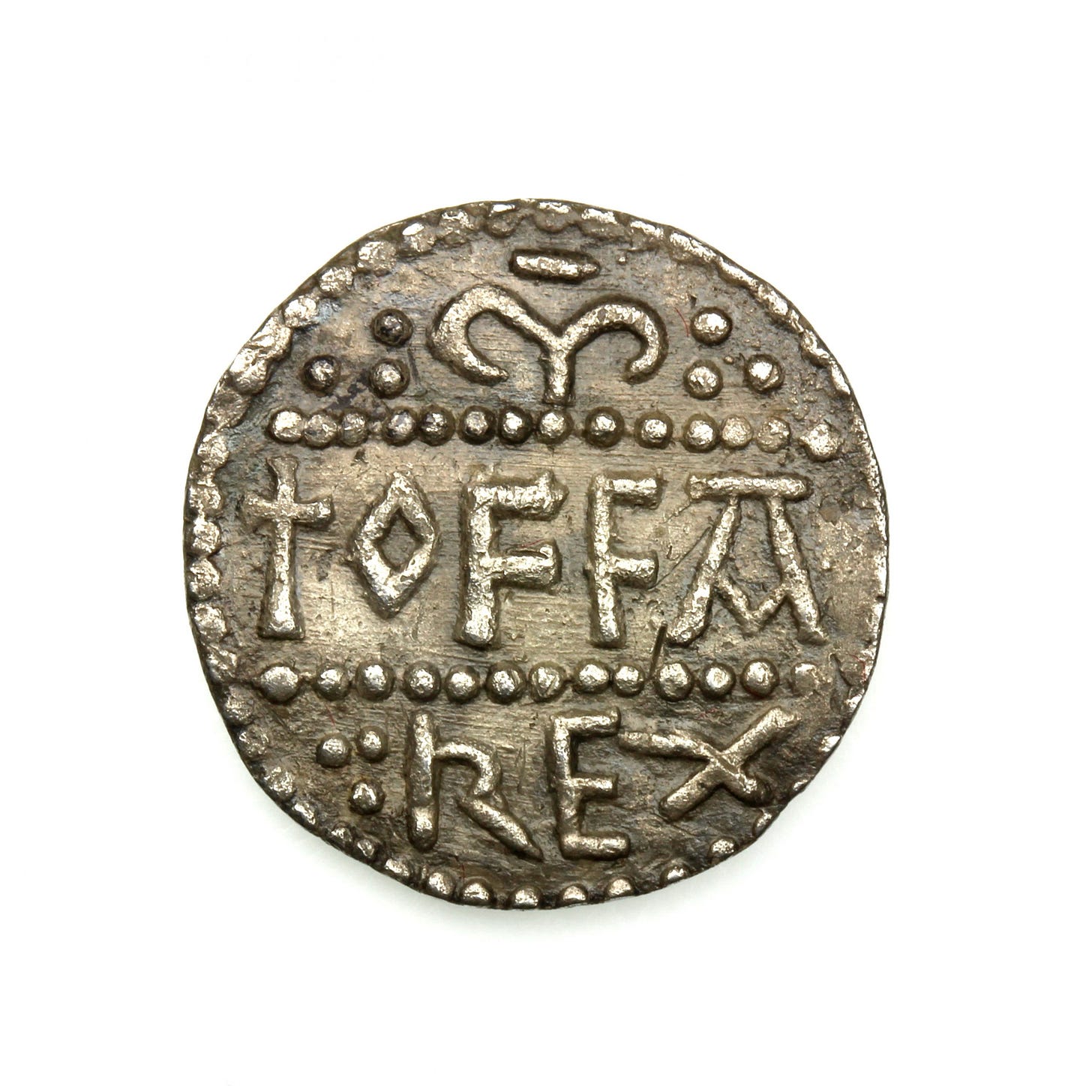Offa Rex resonant in silver
Geoffrey Hill
Wallace Stevens once said “money is a kind of poetry”: a claim that might be cashed in at the bank of ideas in various ways. A strange fact that I hear behind it, though, is that his wife, Elsie Kachel Stevens (1886–1963), seems to have been the model for the head of Liberty featured on the ten-cent coin (commonly known as the “Mercury Dime”) that was issued by the United States Mint between 1916 and 1945. So every time he checked his change Stevens had the opportunity to ponder how — as he wrote in “An Ordinary Evening in New Haven” — “real and unreal are two in one”.
Stevens wasn’t the only twentieth-century poet to have a personal connection to the coins in his pocket. As a member of the Irish Senate, W.B. Yeats — who once wrote of throwing “a brown penny / To find out if I might love” — enthusiastically took charge of the committee designing new coinage for the Irish Free State. The heraldic Irish harp was to replace the British monarch on the “heads” or obverse side, while on the reverse Yeats decided the different denominations should be symbolised by different animals (was he consciously thinking of it as the “tails” side?). A design competition chose the English artist, Percy Metcalfe. Objections came from various quarters: a livestock inspector from the Ministry of Agriculture thought the bull was “all wrong”; Yeats’ great love, the republican Maud Gonne, disliked the fact that the artist was English; and the Catholic Church felt the designs were pagan. Yeats himself was unhappy with the meddling realism of people more concerned with the accurate representation of farm products for export, which he said resulted in animals that were “better merchandise but less living”. By 1928, though, the proposal went through, and the Metcalfe designs were used until the end of the twentieth century, when Ireland joined the Euro. So when Philip Larkin, in his 1954 poem “Church Going”, donates “an Irish sixpence” to the collection box of an empty church, he is also leaving an allusion to Yeats — the poetic hero of his youth — in his poem of lost faith.
In the economics of cultural production, most poems amount to a small pile of coins at best, compared to the paper money of the pages of a novel (Ezra Pound once wrote dismissively of Arnold Bennett’s “cash-register finish”). Poets are not only drawn to coins as their most common form of earnings, though. Like words, coins seem to symbolise so much more than they need to in the functional exchange of daily life: they are, in this way, an image of the poetic image. As Yeats’ biographer Roy Foster comments, the poet’s study of medals and coins for the coinage committee was also a way of “adding to his personal poetic store of images from antiquity”. The odd thing about a shiny penny is that it is obviously much more valuable as an exquisite piece of metal than anything one can actually buy for 1p. The surprisingly right word that every poet seeks is the penny on the street mistaken for riches (numismatics has its own poetry, of course: the way light radiates from the centre of a bright coin, for example, is known as its “cartwheel sheen”).
Keep reading with a 7-day free trial
Subscribe to Some Flowers Soon to keep reading this post and get 7 days of free access to the full post archives.






